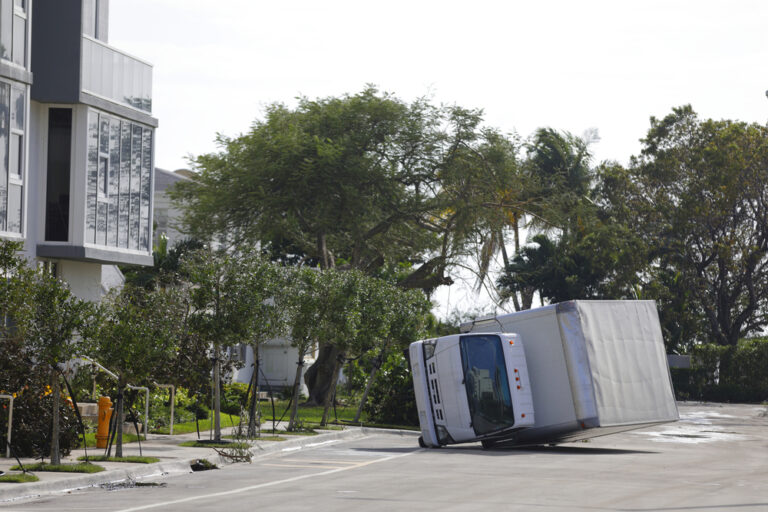The UK Met Office has created a prototype forecasting model that will base the severity of an extreme weather event on the risk of causing vehicles to overturn.
The new model, which was outlined in a recent research paper published by the Royal Meteorological Society, is part of a shift toward impact-based forecasting by the UK national weather service.
According to the Met Office the model – known as the Vehicle OverTurning (VOT) model – will support the current system of wind warnings issued by the Met Office’s National Severe Weather Warning Service (NSWWS).
The VOT will work by highlighting areas of the road network that are at risk of disruption due to vehicle overturning incidents.
According to the authors of the Met Office research paper, Rebecca Hemingway and Joanne Robbins, there is a growing recognition that “traditional forecasts and warnings, which are solely hazard focused, can be difficult for users to relate to and take action on”.
As a result, the Met Office began issuing impact-based weather warnings in 2011. But according to Hemingway and Robbins the process for issuing impact-based warnings so far has been largely subjective, “being predominantly based on meteorologist expertise and experience of past high-impact weather events and discussions with local advisors”.
By contrast the VOT model combines probabilistic hazard information with vulnerability and exposure data “to provide an objective, consistent assessment of potential risk.”
The model uses minimum accident wind gust speeds, which are defined as the wind speeds required to overturn unloaded and loaded heavy goods vehicles, unloaded light goods vehicles and cars.
This dataset is cross-referenced with a vulnerability score for a section of road, which is calculated by looking at four characteristics that influence the road’s susceptibility to wind-induced vehicle overturning. The four characteristics are altitude, number of road lanes, infrastructure and the road’s position relative to the forecast wind direction.
Finally, the model leverages traffic volume data from the UK Department of Transport. The next step is for the model to be evaluated against observed occurrences of vehicle overturning incidents.
The authors also want to test out the model with end users such as operational meteorologists at the Met Office and meteorologists embedded with road transport authorities such as Highways England. The results of these trials will help determine the value of hazard impact models to different user groups, says the Met Office.



